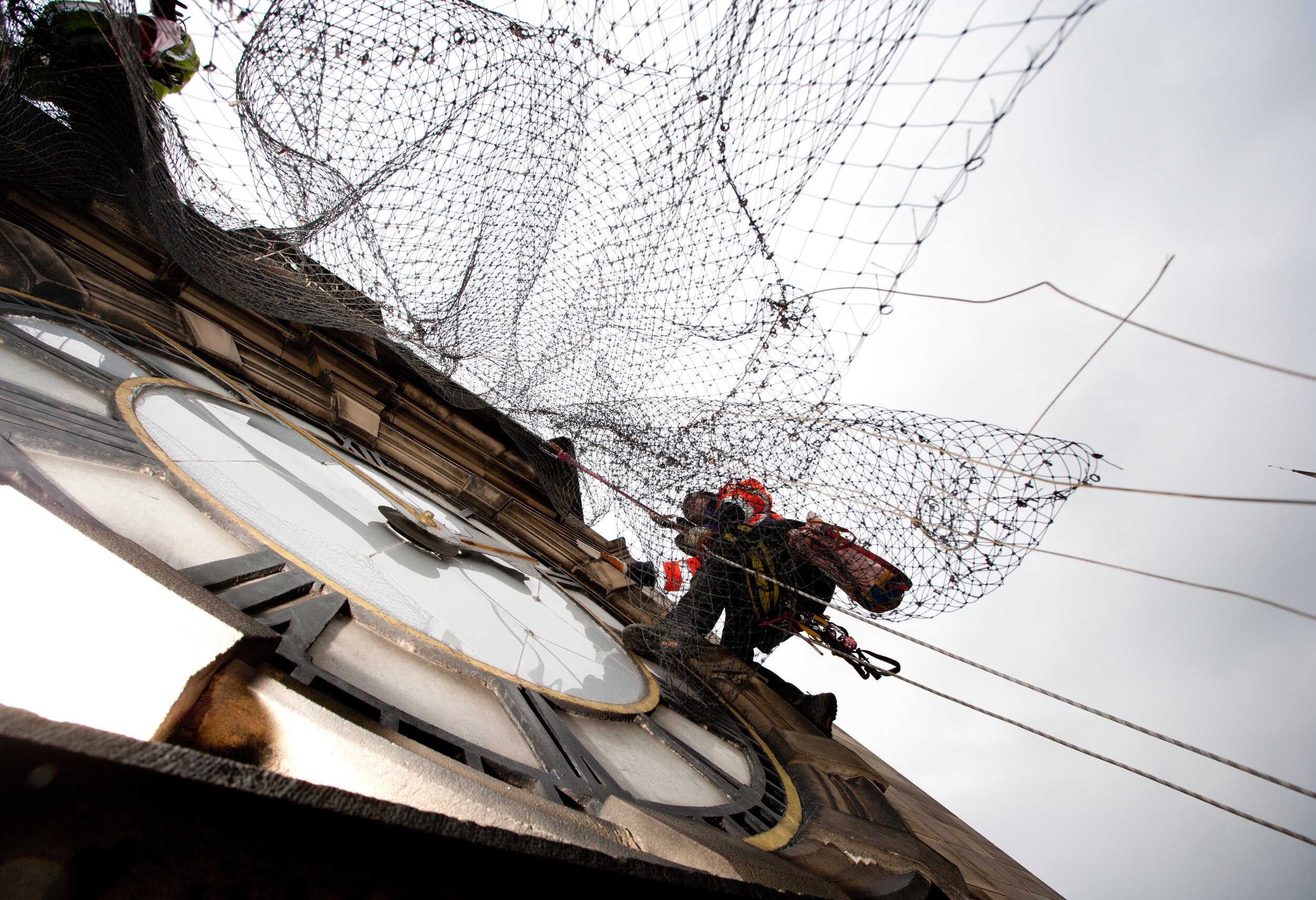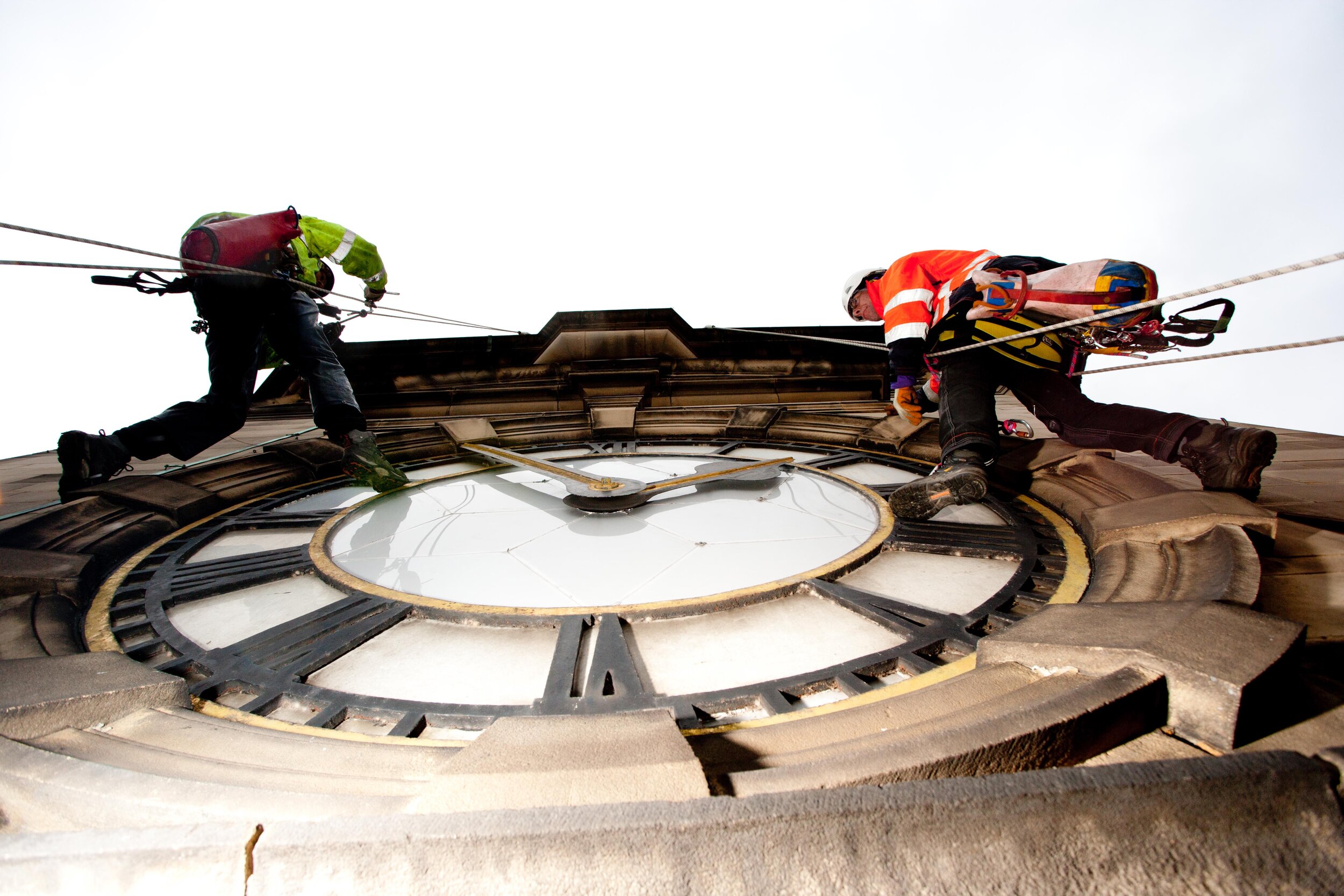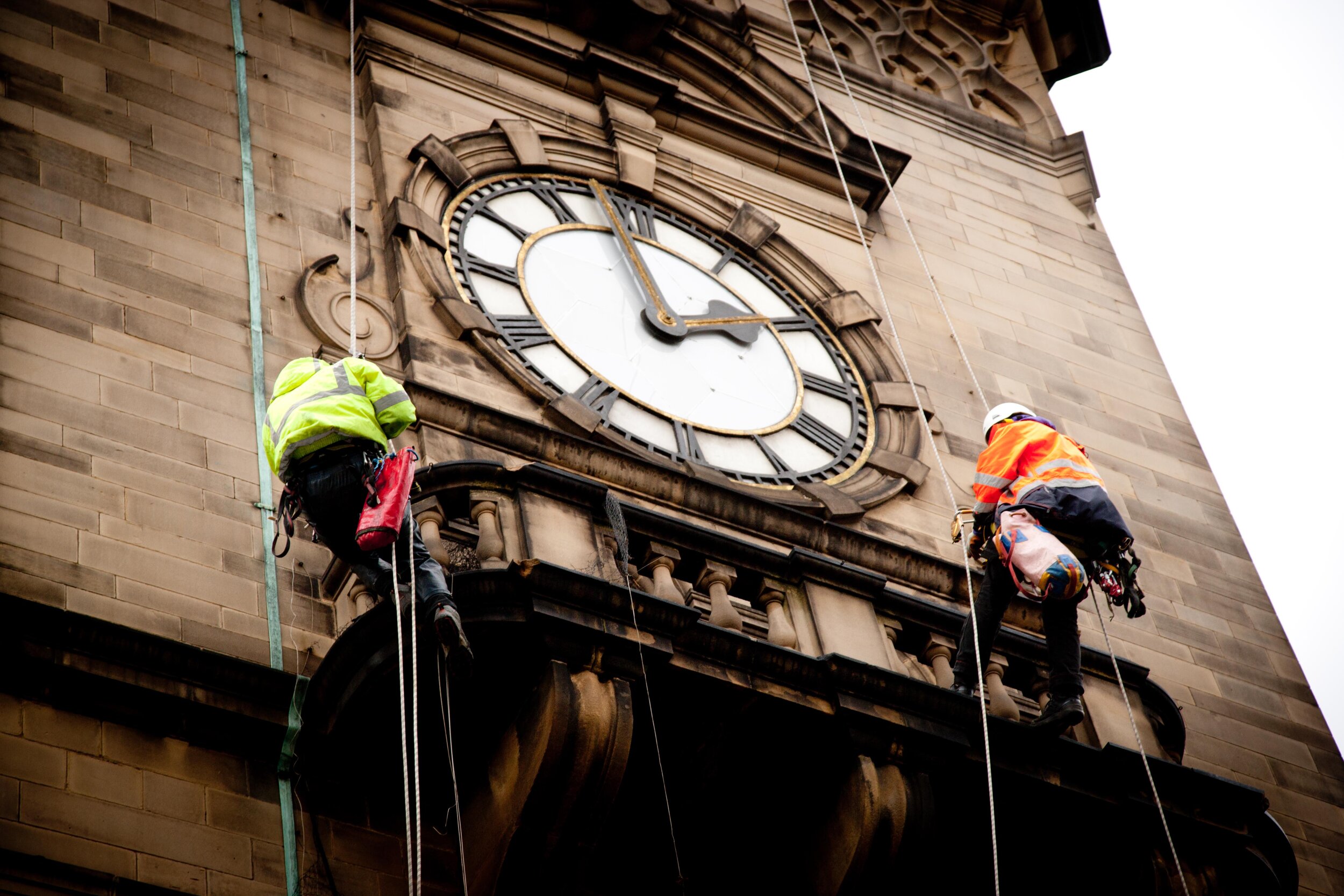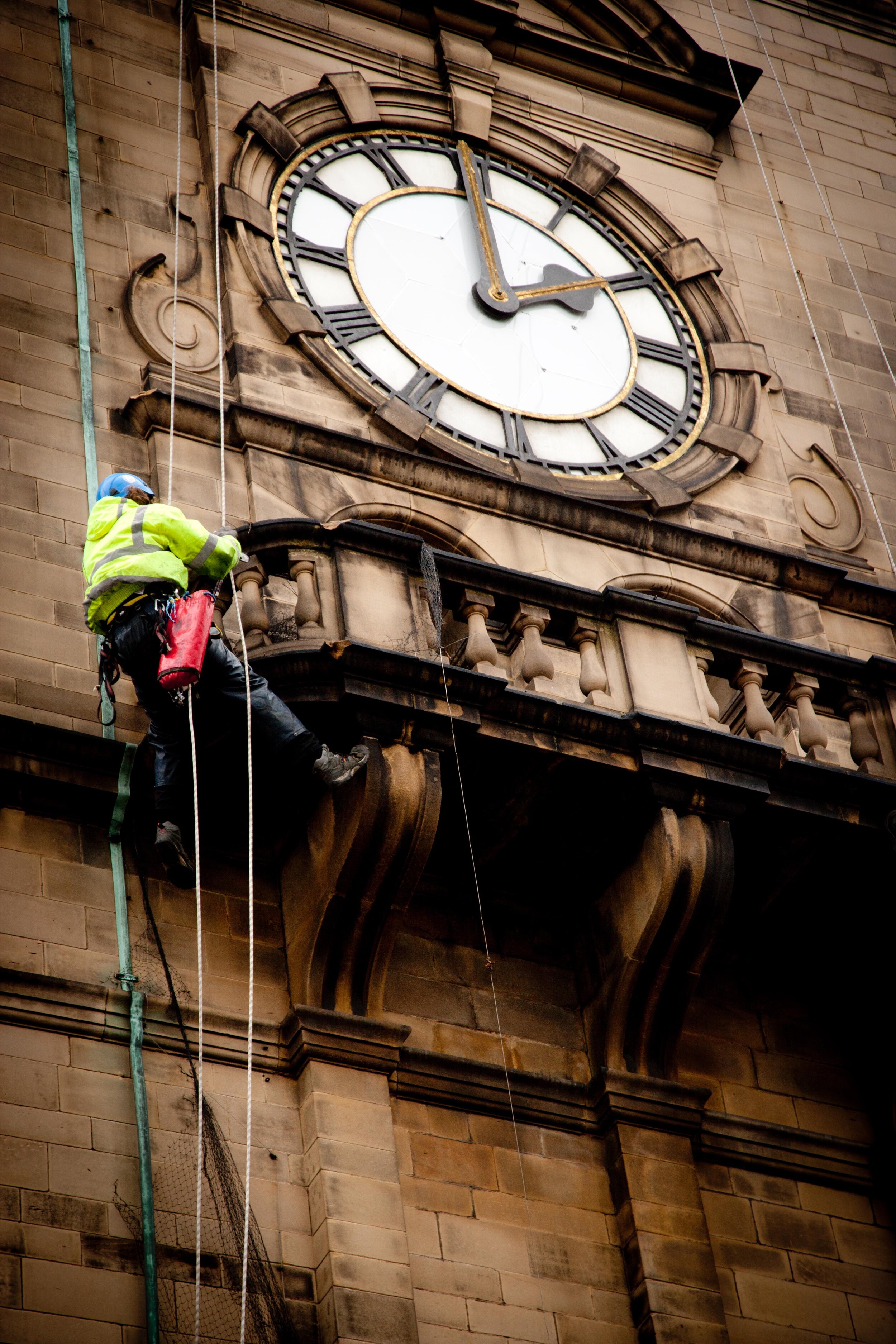Sheffield Town Hall Restoration






Sheffield’s fourth Town Hall is situated on Pinstone Street in the centre of the city. It was designed by E. W Mountford, a London architect, and begun in 1890. It was opened by Queen Victoria on 21 May 1897 and is Grade 1 listed.
It has long been thought that the exterior walls were built with ‘Stoke’ stone from the Stoke Hall Quarry near Grindleford, Derbyshire. During this work, however, it was discovered that the stone actually came from a long-disused quarry at Walkley, to the north of Sheffield city centre.
The clock tower stands at the north corner of the Town Hall, set back slightly in deference to the main façade. It is 64m (210ft) high and, appropriately for Sheffield, is topped with a 2.13m statue of Vulcan, the Roman god of fire and metalworking. The four clock dials are 2.5m in diameter.
Although the Town Hall clock was originally designed to be capable of working with bells they were never installed. In 2002, though, an electronic bell sound system was added to provide an hourly strike and Westminster-style quarter chimes.
The project
The clock tower has been very exposed to the weather for over 100 years and its condition had deteriorated in recent years.
Considerable thought was given to safe access to the tower. It is in a very central location with events taking place and members of the public going about their business directly below. In addition, political leaders are working within yards inside the Town Hall. There was no room for mistakes. A very specialised scaffold was designed which appeared from some angles to be floating in mid-air. The initial gantry scaffold erected at ground floor level went up on 13 April 2013. The scaffold was then erected up the face of the tower and cantilevered around the high level balconies ready for the masonry work to start after the Easter holidays.
Specialist repair was required. The original ironwork which had corroded within the structure was exposed and treated and indent repairs were carried out to the ornate carved capitals. Other masonry was repaired and repointed as necessary. In addition, new rainwater pipes, asphalt floors and gutters were installed.
Suitable fine sandstone providing a good match with the original stone was sourced from local suppliers based in Chesterfield.
The reaction
Paul Bangert of Sheffield City Council’s Capital Delivery Architects Team said:
“Maysand’s whole work was superb, to be honest. As the scaffold issues were being sorted out they showed a lot of patience. After that, they just did the work. In their style, they went straight through it.
“Although the scaffold issue meant we lost a bit of time, Maysand pulled back in construction time and finished on time and within budget. It was a job well done. Technically, they did exactly what was required. The way they quickly obtained materials when they exposed the corroded ironwork shows experience and confidence. If we had gone a non-specialist route I could have seen problems.
“I have total confidence in them and their quality work. I’m always happy to use Maysand. They are very skilled at what they do.”
Maysand’s Managing Director, Bryn Lisle, commented:
“We spent a considerable amount of time working with the Council, planning the works before we started on site and selecting the right sub-contractors to form a solid project team. This was reflected in the way the job was administered and completed. The project was a credit to all involved.”
